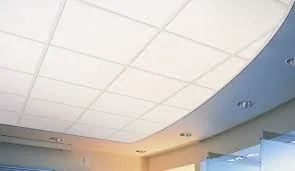- Afrikaans
- Albanian
- Amharic
- Arabic
- Armenian
- Azerbaijani
- Basque
- Belarusian
- Bengali
- Bosnian
- Bulgarian
- Catalan
- Cebuano
- Corsican
- Croatian
- Czech
- Danish
- Dutch
- English
- Esperanto
- Estonian
- French
- German
- Greek
- Hindi
- Indonesian
- irish
- Italian
- Japanese
- Korean
- Lao
- Malay
- Myanmar
- Norwegian
- Norwegian
- Polish
- Portuguese
- Romanian
- Russian
- Serbian
- Spanish
- Swedish
- Thai
- Turkish
- Ukrainian
- Uzbek
- Vietnamese
ኅዳር . 11, 2024 12:15 Back to list
ceiling grid main tee
Understanding Ceiling Grid Main Tee Systems An Overview
Ceiling grid main tee systems are integral components in modern building design, primarily utilized in commercial and institutional spaces. These systems serve as the backbone of dropped or suspended ceilings, providing structure and support for various ceiling tiles and panels. This article aims to delve into the various aspects of ceiling grid main tee systems, including their design, installation, benefits, and applications.
What is a Ceiling Grid Main Tee?
A ceiling grid main tee, often referred to as a 'main tee' or simply 'tee,' forms part of a grid framework used to support ceiling tiles. Made from durable materials such as galvanized steel, aluminum, or other alloys, these tees are designed to hold the weight of the ceiling tiles, lighting fixtures, and other ceiling-mounted elements. Main tees run horizontally across the space, with cross tees inserted perpendicular to them, creating a grid pattern that seamlessly integrates various ceiling components.
Design and Layout
The design of a ceiling grid system begins with careful planning. The first step is determining the appropriate layout, which involves measuring the dimensions of the ceiling area and calculating the required amount of main tees and cross tees. Typically, main tees are installed at 4-foot intervals, while cross tees fill in the gaps based on the dimensions of the selected ceiling tiles, usually 2 feet by 2 feet or 2 feet by 4 feet.
In designing the grid, it is essential to consider factors such as the weight of the ceiling tiles, potential overhead plumbing or electrical installations, and the desired aesthetic appeal. Customizing the grid layout can enhance not only functionality but also the visual aspect of the space—making it more attractive to occupants and visitors.
Installation Process
The installation of a ceiling grid main tee system can be a straightforward process but requires attention to detail. Here’s a step-by-step guide
1. Preparation Ensure all tools and materials are on hand. Tools often needed include a level, measuring tape, chalk line, and suspension wires.
2. Mark the Ceiling Use a chalk line to mark the ceiling boundaries for the grid. Establish a reference line for the main tees, typically around the highest point of the ceiling.
3. Install Suspension Wires Attach suspension wires to the ceiling joists or structural supports to hold the grid. These wires should be spaced according to local building codes, usually at intervals of 4 feet.
ceiling grid main tee

4. Install Main Tees Begin placing the main tees into the secured suspension wires. It’s important to ensure they are level to maintain an even ceiling finish.
5. Insert Cross Tees Once the main tees are in place, insert the cross tees into the slots of the main tees, forming the complete grid structure.
6. Add Ceiling Tiles Finally, place the ceiling tiles into the grid. Tiles can be easily removed and replaced, allowing for maintenance access or aesthetic updates.
Advantages of Using Main Tee Systems
Ceiling grid main tee systems offer numerous advantages, making them a popular choice in various settings
- Flexibility These systems allow for easy installation and adjustment, accommodating changes in building design or function over time.
- Accessibility The suspended ceilings provide access to ducts, pipes, and wiring above without significant disruption, facilitating maintenance and upgrades.
- Aesthetic Variety With a plethora of tile designs, materials, and colors available, ceiling grid systems offer significant design flexibility, enhancing the overall look of a space.
- Energy Efficiency Modern ceiling tiles often have thermal properties that improve insulation, potentially reducing heating and cooling costs.
Applications
Ceiling grid main tee systems are widely used in offices, schools, hospitals, retail stores, and more. They are particularly beneficial in environments that require frequent maintenance or updates to building systems, ensuring that accessibility and aesthetics are maintained without compromise.
In conclusion, ceiling grid main tee systems are crucial in modern architecture, providing structural support and aesthetic versatility for suspended ceilings. Understanding their design, installation, and benefits is essential for architects, builders, and property managers looking to create functional and appealing spaces. Whether for new construction or renovations, investing in a quality grid system can significantly enhance the longevity and usability of a building’s interior.
-
Transform Interiors with PVC Gypsum Ceiling: A Stylish, Durable, and Moisture-Resistant SolutionNewsMay.19,2025
-
The Smart Interior Upgrade: Discover the Durability and Versatility of Gypsum Ceiling Access Panel SolutionsNewsMay.19,2025
-
The Smart Choice for Interior Design: Discover the Value of PVC Gypsum Ceiling SolutionsNewsMay.19,2025
-
Mineral Fiber Ceiling Tiles: The Smart Blend of Performance and AestheticsNewsMay.19,2025
-
Mineral Fiber Ceiling Tiles: The Superior Choice Over Gypsum for Sound and Fire SafetyNewsMay.19,2025
-
Mineral Fiber Ceiling Tiles: Eco-Friendly Strength and Style for Every CeilingNewsMay.19,2025







